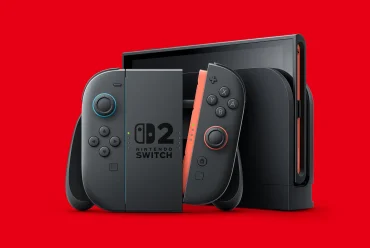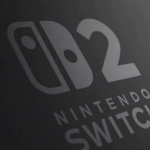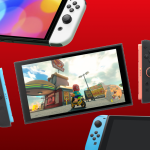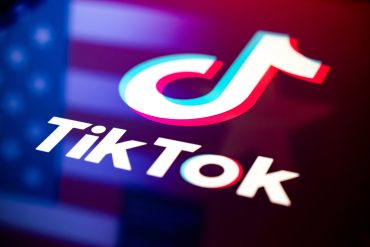
- Gaming & Entertainment
Nintendo Switch 2 Hits 3.5 Million Sales Amid Amazon Ban
5 minute read

Nintendo Switch 2 launch sets new sales records while fraudulent Amazon listings exploit consumer demand during supply shortages
Key Takeaways
- Nintendo Switch 2 sells 3.5 million units in four days since June 5 launch, making it the fastest-selling Nintendo hardware ever amid severe supply shortages
- Amazon excluded from official US retailers for Switch 2 due to ongoing dispute over third-party sellers undercutting Nintendo’s pricing strategy
- Fake Amazon listings exploit demand as scammers create fraudulent Switch 2 sales pages using official branding to deceive consumers during stock shortages
Introduction
The Nintendo Switch 2 faces a surge in fraudulent Amazon listings as scammers exploit record-breaking demand for the console. The gaming giant’s latest hardware launched with unprecedented success, selling 3.5 million units globally within four days of its June 5 release.
Nintendo’s strategic decision to exclude Amazon from its official US retailer network creates a prime opportunity for fraudulent sellers. The company restricts Switch 2 sales to GameStop, Best Buy, Target, and Walmart, leaving Amazon shoppers vulnerable to fake listings that mimic legitimate sales pages.
Key Developments
The Switch 2 shortage stems from extraordinary consumer demand that outpaces Nintendo’s production capacity. Official retailers sell out within minutes of restocking, forcing consumers to search alternative channels where scammers position fake listings.
Nintendo’s exclusion of Amazon from authorized retailers traces back to a pricing dispute involving third-party sellers. Bloomberg reports that unauthorized sellers sourced Nintendo products from Southeast Asia and sold them at prices below Nintendo’s official rates, undermining the company’s pricing strategy.
The fake Amazon listings exploit sophisticated deception tactics. Scammers create invite-only deals using official Nintendo branding and press materials, making fraudulent pages appear legitimate to desperate consumers seeking the sold-out console.
Market Impact
Nintendo’s controlled distribution strategy maintains the Switch 2’s $449.99 retail price despite supply constraints. The company prioritizes brand value protection over maximizing immediate sales volume through broader retail partnerships.
The console’s $79.99 software pricing reflects industry-wide cost increases, though Nintendo confirms the Switch 2 generates lower per-unit profit margins than its predecessor. Rising production costs and maintained pricing create financial pressure on the gaming giant.
Consumer frustration grows as legitimate stock remains scarce across authorized channels. The scarcity drives some buyers toward unverified Amazon listings, creating a feedback loop that rewards fraudulent sellers.
Strategic Insights
Nintendo’s retail strategy demonstrates the company’s commitment to pricing discipline over market penetration. The decision to exclude Amazon protects profit margins but limits consumer access during peak demand periods.
The Switch 2’s hybrid design maintains Nintendo’s competitive differentiation from Sony and Microsoft’s traditional console approaches. Enhanced features like 1080p portable gaming and 4K docked output justify premium pricing while preserving the platform’s unique market position.
Third-party marketplace challenges affect multiple premium brands beyond Nintendo. Apple and Nike face similar unauthorized seller issues on Amazon, highlighting broader e-commerce platform control problems that impact brand integrity.
Expert Opinions and Data
Nintendo maintains its position despite controversy, stating “There is no such fact” regarding the Amazon dispute and declining to “disclose details of negotiations or contracts with retailers.” The company’s defensive stance suggests ongoing sensitivity around retail partnerships.
Amazon counters that Bloomberg’s reporting is “inaccurate” and emphasizes being “pleased to offer Nintendo products directly to our customers as part of our commitment to providing an exceptional shopping experience.” The platform’s response indicates desire to restore the retail relationship.
Consumer reviews on fake listings reveal growing awareness of fraudulent activity. ZDNet analysis confirms that skeptical buyers increasingly warn others to consult Nintendo’s authorized seller list before making purchases.
Gaming industry analysts note that supply constraints create predictable opportunities for fraudulent sellers during major hardware launches. The pattern repeats across console generations, with scammers adapting tactics to exploit consumer desperation during shortage periods.
Conclusion
The fake Amazon listing controversy underscores Nintendo’s successful Switch 2 launch while highlighting vulnerabilities in e-commerce fraud prevention. The console’s record-breaking sales validate Nintendo’s hardware strategy, even as distribution limitations create consumer access challenges.
Nintendo’s retail control approach prioritizes long-term brand value over short-term sales maximization. The company’s willingness to exclude major platforms like Amazon demonstrates confidence in its product appeal and commitment to pricing discipline across authorized channels.








